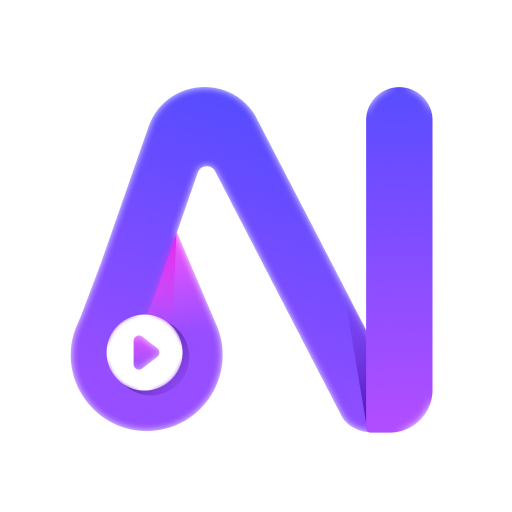Text to Video-AI-powered text-to-video conversion.
Transform text into dynamic videos with AI.
How can I turn this story into a short film?
What would be a good video concept for a tech tutorial?
Can you help me outline a documentary on environmental conservation?
I need ideas for a cooking show segment, any suggestions?
Related Tools
Load MoreText-to-Video
Sora transforms text prompts into detailed video scenes, simulating real-world dynamics.

Video to Text
A video-to-text transcription assistant.
Video AI Genie - Create video from text.
Bring your creative ideas to life with Video Ginnie : Describe your vision in text and let us craft it into captivating videos, perfect for platforms like YouTube, Instagram, and TikTok.

Text to Video AI by Shimmer
Create AI generated videos with text, images, or videos in ChatGPT

Text to Video Creator
Friendly assistant for creating engaging product videos.

Blinkcuts - Text To Video
A GPT that creates videos from text inputs.
20.0 / 5 (200 votes)
Introduction to Text to Video
Text to Video is a specialized service designed to transform written content into engaging and creative video concepts. The primary purpose of this service is to assist users in visualizing and developing video content based on their textual descriptions or queries. This involves generating video ideas, storyboards, scripts, and even visual aids to help bring the user's vision to life. For example, if a user describes a scene for a marketing video, Text to Video can provide a detailed concept, including script suggestions, scene breakdowns, and visual prompts to guide the production process. Another scenario could be a teacher wanting to create an educational video; Text to Video can outline the video structure, key points, and suggest visual elements to enhance the learning experience.

Main Functions of Text to Video
Video Conceptualization
Example
A user provides a brief description of a product launch video. Text to Video generates a comprehensive concept, including theme, tone, and key messages.
Scenario
A small business owner wants to create a video to announce a new product. Text to Video outlines the video concept, suggests scenes, and provides a draft script, helping the owner visualize the final product.
Script Writing Assistance
Example
A user submits an idea for a tutorial video. Text to Video helps draft a detailed script, including dialogue, instructions, and transitions.
Scenario
A fitness instructor plans to create a workout tutorial. Text to Video drafts a script that includes step-by-step instructions, motivational dialogue, and timing cues, streamlining the production process.
Storyboarding
Example
A user describes a narrative video project. Text to Video creates a storyboard with detailed scene descriptions and visual suggestions.
Scenario
A filmmaker wants to produce a short film based on a written story. Text to Video develops a storyboard that outlines each scene, including camera angles, character actions, and key visual elements, providing a clear blueprint for filming.
Ideal Users of Text to Video
Content Creators
Individuals or teams producing videos for platforms like YouTube, TikTok, or Instagram. They benefit from detailed video concepts, script assistance, and storyboarding to enhance their content quality and engagement.
Educators and Trainers
Teachers, trainers, and educational content creators who need to produce instructional videos. They gain from structured video outlines, clear scripts, and visual aids that make learning materials more effective and engaging.

How to Use Text to Video
1
Visit aichatonline.org for a free trial without login, and no need for ChatGPT Plus.
2
Prepare your text input by clearly defining the topic, audience, and purpose of the video to guide the AI in creating the content.
3
Choose the video style that best fits your needs, such as explainer, tutorial, or promotional video, to tailor the output to your desired format.
4
Customize the visual elements, such as images, animations, and text overlays, to enhance engagement and align with your brand or message.
5
Preview and edit the video to ensure accuracy and effectiveness, making adjustments as necessary before finalizing and exporting the video.
Try other advanced and practical GPTs
Blinkcuts - Text To Video
AI-powered text to video creation

Text to Video AI by Shimmer
Transform Text into Engaging Videos with AI

Table Maker
AI-powered table generation tool

Image to Table Converter
AI-powered table extraction from images.

Table Extractor Pro
AI-powered table extraction tool

Recording Transcript Summarizer for Executives
AI-powered Executive Meeting Summarizer

Novi AI - AI Text to Video
Transform Text into Engaging Videos with AI

AI Text to Video
Turn your text into dynamic videos with AI

Transcript Video to Text
AI-powered video transcript conversion tool.

Prompt builder for text-to-video AI Video tools
AI-powered prompts for seamless text-to-video creation.

Text to Video Creator
AI-powered Text to Video Transformation

CodeCraft
AI-Powered Code Generation for Developers

- Social Media
- Marketing
- Education
- Storytelling
- Tutorials
Text to Video Q&A
What is Text to Video?
Text to Video is an AI-powered tool that transforms written content into engaging video presentations, suitable for various applications such as marketing, education, and entertainment.
What types of videos can I create with Text to Video?
You can create a wide range of videos including tutorials, explainer videos, promotional content, educational presentations, and more, by customizing styles and visual elements to suit your needs.
How does Text to Video handle different text formats?
Text to Video can process a variety of text formats, including articles, scripts, and bullet points, and uses natural language processing to accurately interpret and convert them into coherent video narratives.
Can I add my own media to the video?
Yes, you can incorporate your own images, videos, and audio files to personalize and enhance the video, ensuring it meets your specific requirements and aligns with your brand.
What are the common use cases for Text to Video?
Common use cases include creating educational videos for online courses, producing marketing videos for brand promotion, developing tutorial videos for product demonstrations, and generating social media content.